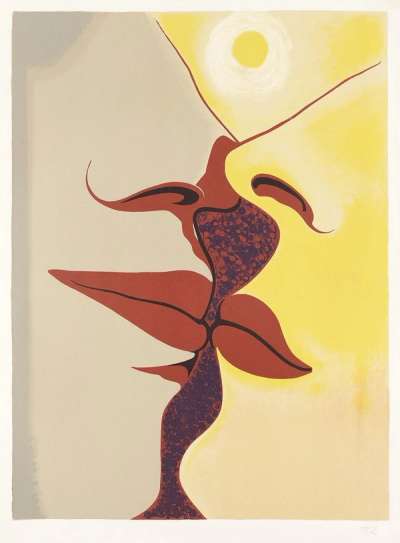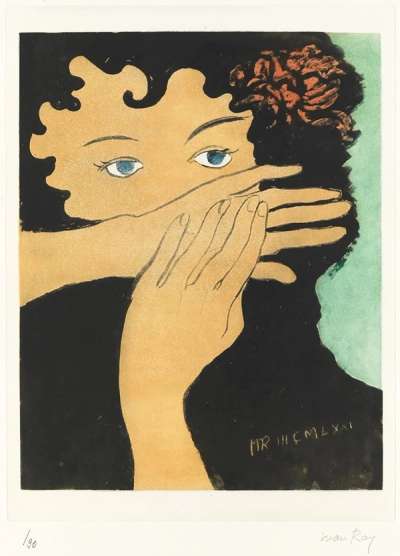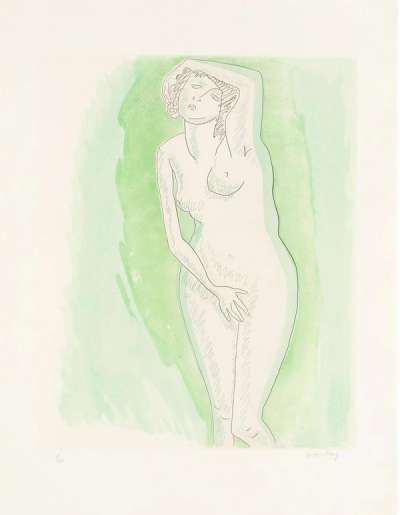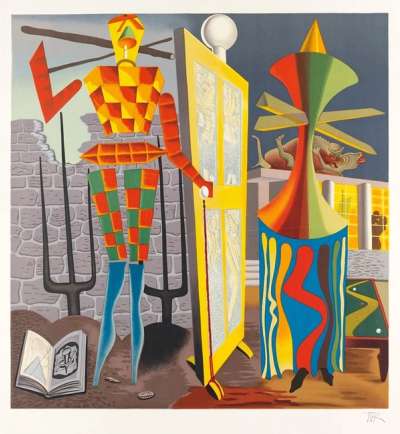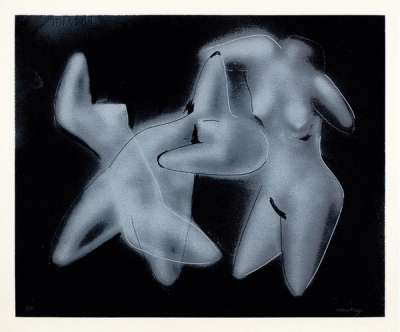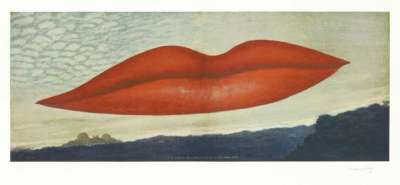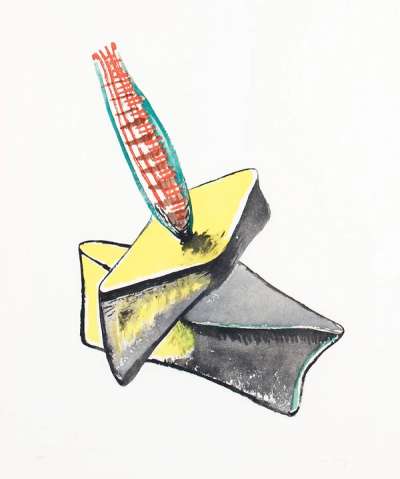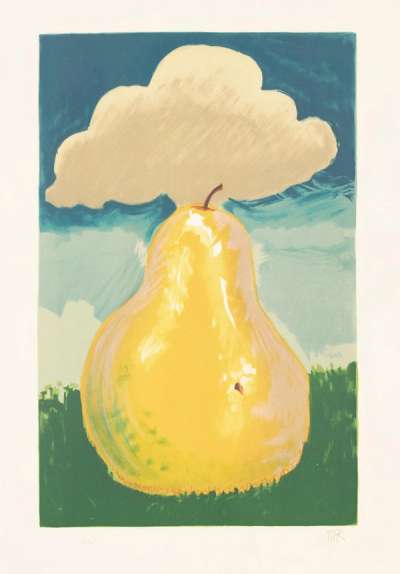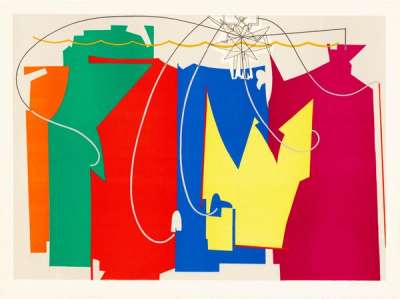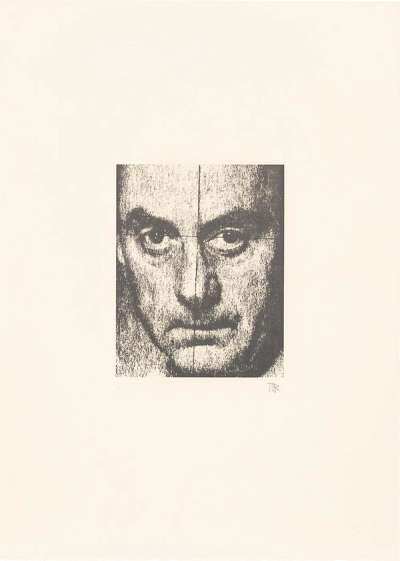 A L'Heure De L'Observatoire - Les Amoureux © Man Ray 1970
A L'Heure De L'Observatoire - Les Amoureux © Man Ray 1970
Man Ray
16 works
Key Takeaways
The market strength of Man Ray's prints has seen consistent growth in recent years, with individual works typically achieving between £8,000 and £20,000. His pioneering rayographs command the highest prices, with Rayograph With Hand, Lens, And Egg (1922) setting a record at £447,552 in 2012. His most iconic works, such as Le Violon D'Ingres (1924), consistently exceed estimates at auction, while his commercial work, including the Electricité portfolio (1931), shows steady appreciation. Authentication requires thorough examination of photographic processes and printing techniques, with reference to the R. Feldman Fine Arts catalogue raisonné and verification through the Man Ray Expertise Committee. The market shows particular strength during relevant events, exhibitions, and fairs, with significant value placed on prints that demonstrate his experimental techniques. Strategic timing of sales, particularly during major Surrealist exhibitions or photography events, can significantly impact returns.
Man Ray treated light itself as a sculptural medium, capturing objects without using a camera and developing techniques that turned accidents into artistic breakthroughs - in this way, he transformed fine art photography. Although conventionally considered a Modernist, his experimental approaches, including solarisation and rayography, transformed everyday objects into mysterious, dreamlike images that became central to the Surrealist movement. This guide provides essential insights for those looking to navigate the market for Man Ray's prints, offering detailed information on valuation, authentication, and effective selling strategies.
Man Ray's technical innovations in photography and printmaking emerged from his determination to push beyond conventional boundaries. His prints, whether created through traditional photographic processes or experimental techniques, often feature ordinary objects transformed into extraordinary visions. Throughout his career, Man Ray collaborated with master printers in Paris and New York, producing editions that maintained the ethereal quality of his original photographs while adding subtle variations unique to the printing process.
How Much Do Man Ray Prints Sell For?
Man Ray's pioneering photographic techniques and his central role in both Dada and Surrealism continue to drive strong market interest in his prints. Individual works typically achieve between £8,000 and £20,000, with prices varying significantly based on the printing technique, edition size, and historical significance.
His rayographs, created by placing objects directly onto photographic paper, consistently achieve the highest prices. The record is held by Rayograph With Hand, Lens, And Egg (1922), which sold for £447,552, more than double its high estimate, in New York in 2012. From a small edition of only 32 prints, this piece is incredibly rare and is considered to be a perfect example of the rayography form.
Man Ray’s most beloved Surrealist works are often photographs that were manipulated at the point of creation. Le Violon D'lngres (1924), a photograph of Kiki de Montparnasse with the f-holes of a violin cut into her back, sold for £102,596 in April 2024 - again, doubling its high estimate. This sale proves not only the power of Ray’s compelling imagery, but also the dedication of his collectors when valuable pieces come to market. The original silver gelatin print of this image set a record for Man Ray’s artwork in 2022, when it sold for over £8.5million in New York. An illustrated version of this Le Violin D’Ingres (1969), produced in a later period of Ray’s career, is also popular as a mid-tier print.
Man Ray is also known for his commercial work. The Electricité portfolio (1931), comprising 10 rayographs created for the Paris electric company, for example, overlays negatives of everyday objects with the suggestion of electricity waves. A complete set sold for £32,210 in 2023. Ray’s poster for Transport London, Keeps London Going (1938), sold in 2018 for £88,396, after selling for less than half this value, £40,000, in 2014. There is, as such, a growing appreciation for Man Ray’s work that has seen print value rise dramatically in recent years.
The most consistently popular of Man Ray’s prints is, however, not a photograph or rayograph. A L'Heure De L'Observatoire - Les Amoureux (1970), a photographic print of a painting, depicts the floating lips of Lee Miller, Man Ray’s partner at the time, above the Paris observatory. Printed in an edition of 150, prints sold multiple times in the past 10 years. In 2023, it achieved £58,000 at Sotheby’s London, almost doubling its high estimate. In 2019, it achieved £75,000 at Christie’s London. In 2015, it achieved £35,000. The personal story, combined with Ray’s distinctive Surrealist style, gives this piece its appeal.
Other popular examples of Man Ray’s non-photographic work include his Revolving Doors (1972) portfolio, which far exceeded an estimate of just over £12,000 in 2023, when it sold for £40,234. Works such as Les Trois Nus (1919), with small edition numbers, typically prove to be high-performing mid-tier prints, selling for within the region of £3,000 to £5,000. Les Trois Nus (1919), for example, sold for £6,073 in 2017. His later abstract works, printed from original paintings or drawings, also fall into this category. A complete collection of De L'Origine Des Espèces Par Voie De Sélection Irrationelle (1971) sold for £5,422 and a print of Rope Dancer Accompanies Herself With Her Shadows (1972) sold for £5,189 (more than five times its high estimate) in 2021.
The breadth of Man Ray's market appeal is reflected in the consistent performance of prints across all periods of his career. While his early experimental works command the highest prices, his later prints maintain steady value, particularly when they connect to his most iconic images. The strength of his market is demonstrated by prints frequently exceeding their estimates at auction, often by substantial margins, suggesting both the depth of collecting interest and the potential for continued growth.
How Do You Authenticate a Man Ray Print?
Authentication of Man Ray prints presents unique challenges due to the various printing techniques and editions produced during and after his lifetime. Establishing provenance forms the foundation of authentication, with particular attention paid to exhibition history, gallery documentation, and previous sales records. Any certificates of authenticity, especially those from galleries that worked directly with Man Ray, such as Galerie Marion Meyer in Paris, carry significant weight.
Examination of the physical print requires a level of understanding of photographic processes and printing techniques usually only found in professional authenticators and Man Ray experts. Man Ray worked with several master printers and studios, including Gemini Graphic Editions Limited for his later works, each leaving distinctive marks that can aid in verification. Different printing processes, from silver gelatin to rayography, require specific technical analysis to confirm period authenticity. The paper type and manufacturing marks can also provide crucial dating evidence - Man Ray favoured specific photographic papers from manufacturers like Agfa and Kodak.
The definitive catalogue raisonné for Man Ray's printed works was compiled by R. Feldman Fine Arts in 1985. This volume contains information about the materials used, any collaborative printers and publishers, and unique characteristics each print may have. The Man Ray Expertise Committee, established after the artist's death, maintains comprehensive records of editions and can assist in verification.
Edition & Signature
Man Ray's approach to signing and numbering prints evolved throughout his career and varied by printing technique. His signature typically appears in pencil on the front of the print, often in the lower right corner, characterised by its distinctive, neat flowing style. Earlier prints might feature his birth name, Emmanuel Radnitzky, while later works bear his adopted name, Man Ray, often accompanied by the date of the original image and the print date.
Edition sizes varied considerably, from intimate runs of eight to 10 for his most experimental works to larger editions of up to 150 prints for more commercial images. Artist's proofs, marked "E.A." (épreuve d'artiste), are particularly valued by collectors. Estate prints, produced after Man Ray's death in 1976 but authorised by his wife Juliet, bear specific estate stamps and numbering systems that help establish their legitimacy within his body of work.
Browse Man Ray prints on the Trading Floor and find out more about the print market growth on the MAB100 Print Index.
Looking to Sell Your Man Ray Prints?
Request a free and zero obligation valuation with our team without hesitation. Track your prints & editions with MyPortfolio.
Has Your Man Ray Been Kept in Good Condition?
The preservation of Man Ray prints demands exceptional care due to the high-contrast nature of his photographic creations. His innovative techniques, while groundbreaking in their artistic impact, often produced prints particularly susceptible to environmental damage, especially fading from direct artificial or natural light. Silver gelatin prints can experience silver mirroring - a bluish metallic sheen that appears in darker areas of the image - while the shadow and colour intensity of traditional lithographs and silkscreens can diminish over time.
Man Ray employed various photographic papers throughout his career, each presenting unique conservation challenges. Early prints on matte albumen paper are particularly delicate and can show discolouration or surface cracking if not properly stored. Later prints on glossy gelatin silver paper may exhibit yellowing or develop surface scratches that interrupt the characteristic luminosity of his images. Solarised prints, created through his pioneering partial exposure technique, require particular attention as their distinctive edge effects can be compromised by poor handling or environmental conditions.
Temperature and humidity fluctuations pose significant risks to all photographic prints. The emulsion layer can separate from the paper base, leading to irreversible damage. Storage conditions must be carefully controlled, with prints kept in acid-free archival materials away from direct light. If framing is necessary, museum-quality UV-protective glazing and archival mounting materials are essential. Prints should only be handled while wearing clean cotton gloves to prevent oils and contaminants from damaging the delicate surfaces.
For advice on how to get started with condition assessment of your Man Ray print, contact MyArtBroker.
When is the Best Time to Sell My Man Ray Print?
The market for Man Ray's prints responds to both his pioneering role in photography and his position as a key figure in Surrealism. His ability to merge these two worlds - creating photographs that look like paintings and paintings that challenge photography - means that his work appeals to multiple collecting categories. This crossover appeal creates numerous optimal selling opportunities throughout the year.
Major exhibitions that focus on either experimental photography or Surrealism can generate fresh interest in Man Ray's prints. For example, 2023 was one of the most productive years for Ray's work in the US market, partly due to the Luxembourg + Co. New York exhibition Man Ray: Other Objects. This exhibition highlighted Ray's treatment of everyday objects as artistic material - a theme that runs through both his photographs and prints. Although not focused on prints specifically, the exhibition's emphasis on Ray's technical innovations sparked renewed interest across all aspects of his market.
Photography events, particularly Paris Photo in November and AIPAD in New York each spring, consistently achieve the strongest results for Man Ray's prints. These specialist fairs attract collectors who understand the historical significance of Ray's contributions to photography, from his rayographs to his solarisation technique. His fashion photographs and portraits tend to perform particularly well at these events, where their technical excellence can be properly appreciated.
Examining auction results and market reports through major auction house websites provides valuable insights into current trends. These resources reveal which elements of Ray's work - his experimental techniques, his Surrealist imagery, or his commercial projects - are experiencing particular market strength. Success often correlates with broader cultural shifts, such as renewed academic interest in the intersection of photography and Surrealism.
MyArtBroker offers advanced art tech tools to help you determine the optimal time to sell your Ray print. Our MyPortfolio service features an AI-powered value indicator that provides real-time valuations of individual prints based on both public and private sales data. Combined with our complimentary valuations, we can help ensure your print achieves maximum value by selling at the perfect moment.
Ways to Sell with MyArtBroker
At MyArtBroker, our specialists provide a free market valuation for your artwork, offering a level of transparency unmatched in today’s market. In addition to our valuations, through our online Trading Floor, you can access real-time insights into works by the artist you’re looking to sell, including pieces that are most in demand, wanted, or currently for sale: allowing sellers to trust the valuation that they are provided.
Additionally, the MyPortfolio collection management service grants you free access to our comprehensive print market database. This resource allows you to review auction histories for the specific work you’re looking to sell, including hammer prices, values paid, and seller returns. In a fluctuating market, this historical data is invaluable - and often comes at a cost elsewhere - offering insights into past and current values to further inform decisions based on market timing and conditions. In addition to our specialists guidance, you have concrete data.
Our approach is tailored to align with the unique attributes of each artwork, and offer optimal results:
How a Private Sale Works
Unlike peer-to-peer platforms, which lack specialised expertise, authenticity guarantees, and legal infrastructure for high-value sales, MyArtBroker operates through private sales ensuring a secure and seamless transaction process. We charge sellers 0% to sell, and take a small commission from our buyers, absorbing essential aspects including insurance, shipping, and marketing - at no extra cost to the seller. There is no magic to it, we’re a lean specialised business with less overheads than traditional models meaning we can do better for our clients.
Our revenue is derived from buyer commissions only, which are individually negotiated upon offer, and we aim to give the client the best return in the market place. By focusing on high-value artworks in excess of £10,000, we provide specialised care and expertise, ensuring each piece receives the attention it deserves, while simultaneously maximising returns with our clients. For works that fall below this threshold speak to the team about a recommendation, we offer market advisory free of charge. Our goal at MyArtBroker is to offer a seamless solution, setting us apart in the art market.
Advisory and Recommendations
In cases for artists and artworks, where our existing network of collectors isn’t the best fit due to value, medium or condition we collaborate with reputable partners to facilitate its sale. Carefully tailoring your artwork to the right party. This tailored approach is especially important as it considers the unique attributes of each artwork, providing sellers with the best possible outcome in today’s shifting art market. You can discuss this approach with us without charge as part of our advisory service.
Such recommendations are on a case-by-case basis, and ensures broader exposure and takes advantage of our knowledge of where a work will do best.
Man Ray Collection Management With MyPortfolio
In addition to our live trading floor, MyArtBroker's MyPortfolio serves as a collection management system, empowering collectors to curate and oversee their prints and editions collection. This feature grants users access to our print market database, uniquely tied to our proprietary algorithm, SingularityX. This algorithm scans and analyses both public auction and private sales data to determine real time valuations of individual print works, factoring in various aspects such as condition, colour, and other factors affecting value.
Read What Powers MyArtBroker's Technology? In Conversation With Stuart Jamieson, Financial Quant to learn more about our algorithm.










